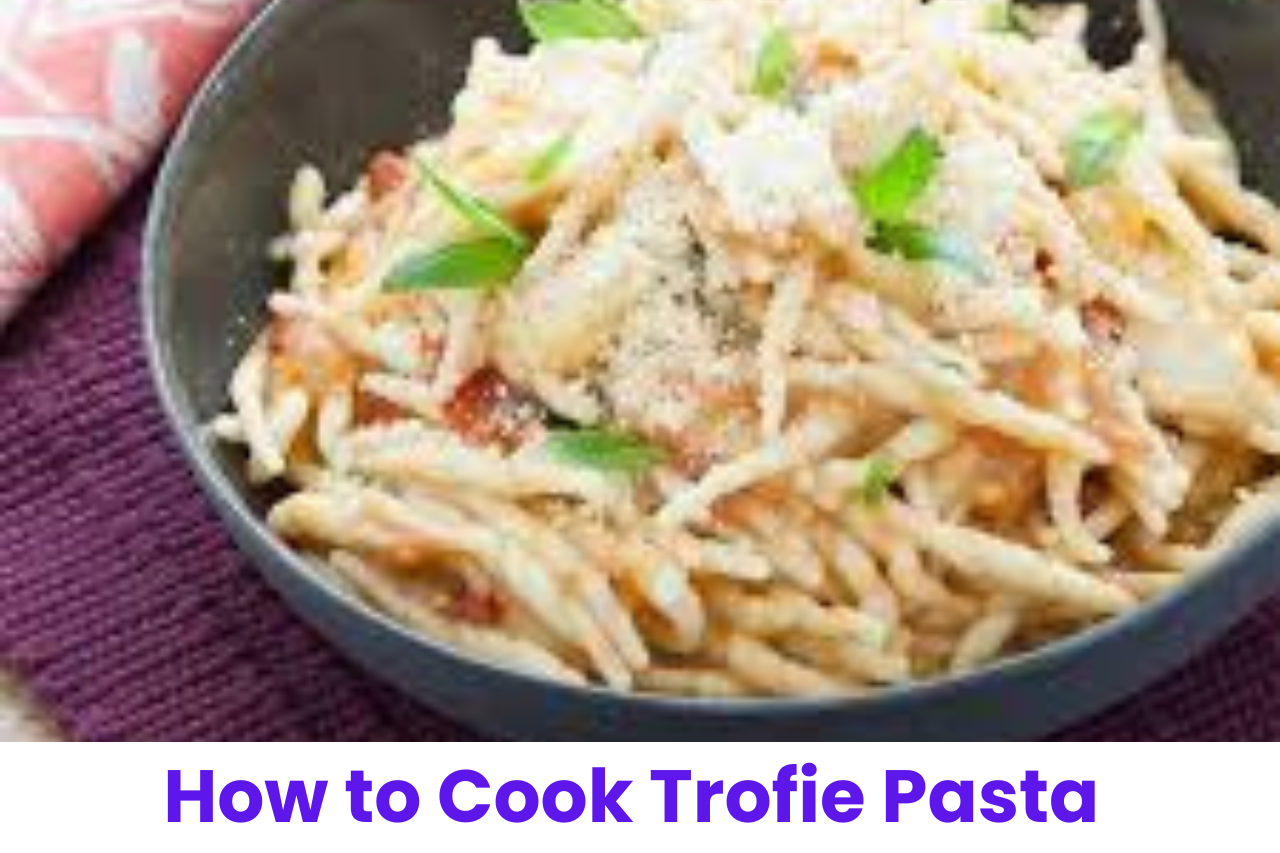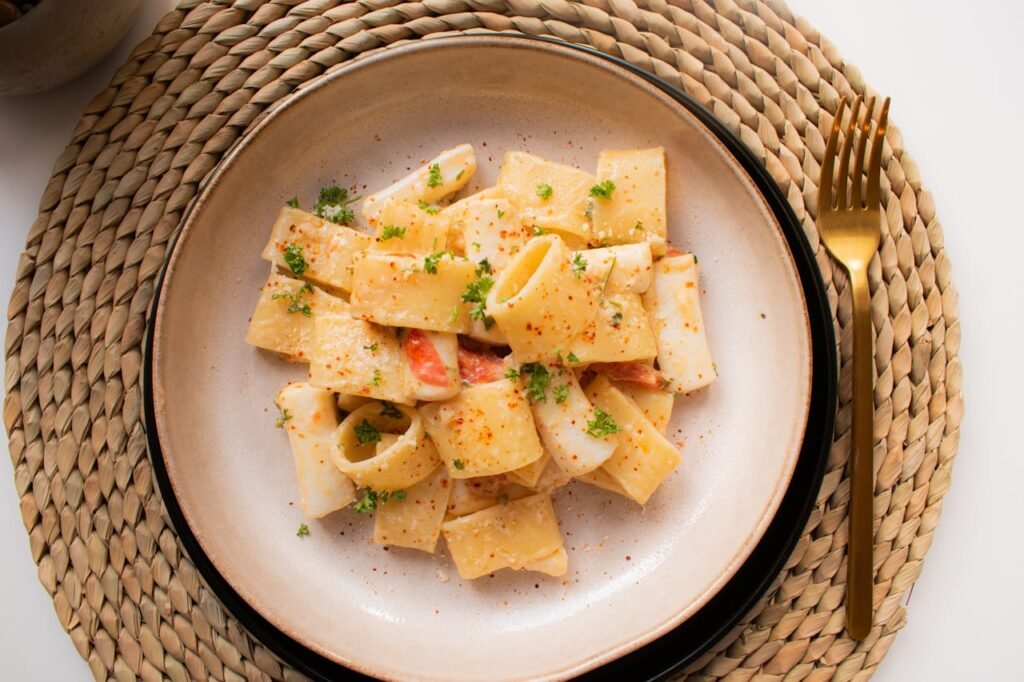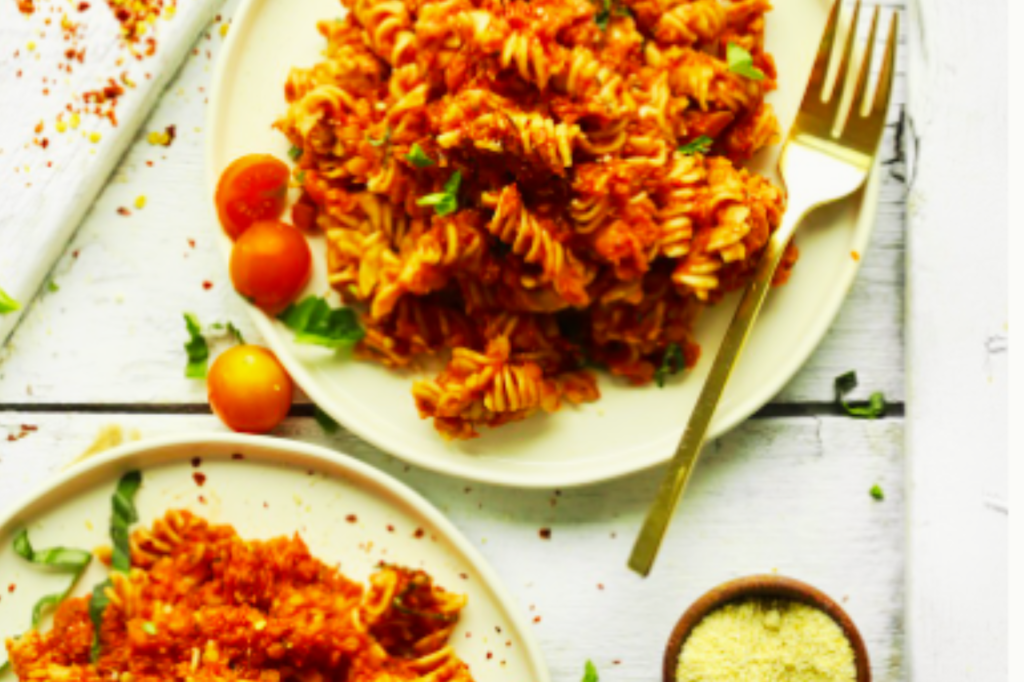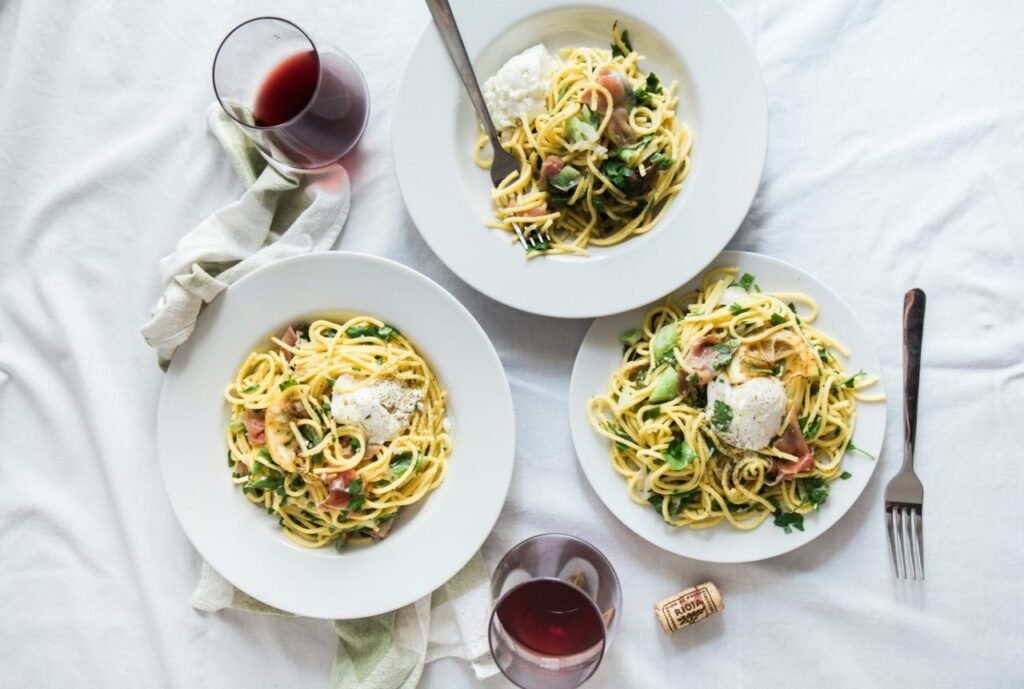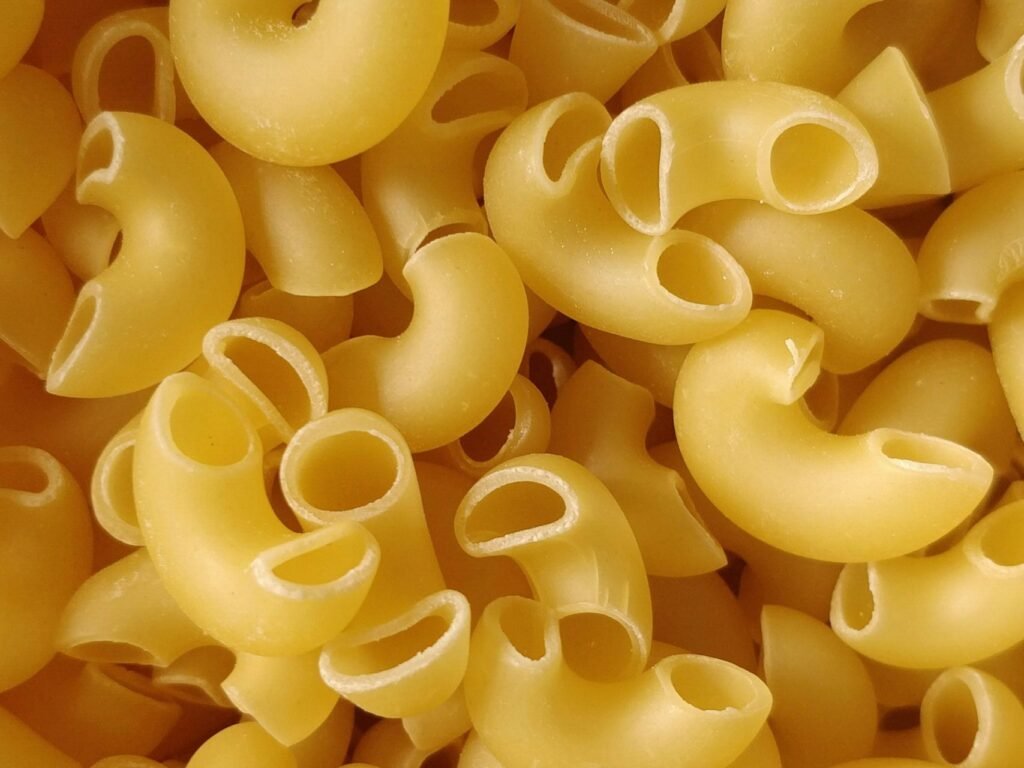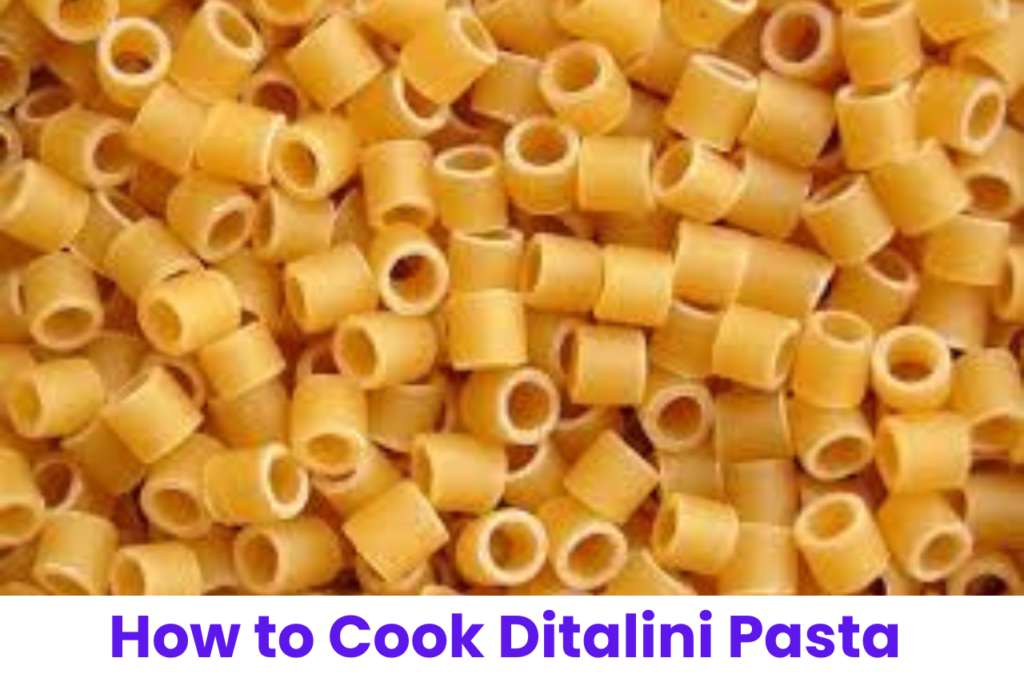Trofie pasta is a delightful and unique variety originating from the Liguria region of Italy, known for its short, twisted shape that holds sauces beautifully. Understanding the correct cooking time for trofie pasta is essential to achieving the perfect texture—firm yet tender, commonly referred to as “al dente.” The proper preparation of trofie pasta enhances its taste and texture, ensuring an enjoyable dining experience. In this guide I will tell you how to cook trofie Pasta.
Understanding Trofie Pasta
Trofie pasta is characterized by its distinct shape and texture. Traditionally hand-rolled, trofie features a twisted, dense form that complements various sauces and ingredients. In Ligurian cuisine, trofie is often paired with basil pesto, diced potatoes, and green beans, creating a hearty and flavorful dish. This pasta holds cultural significance in Liguria, reflecting the region’s culinary heritage and artisanal pasta-making traditions.
Cooking Trofie Pasta: Key Considerations
Cooking trofie pasta requires attention to several key considerations to achieve optimal results. Begin by using a large pot of generously salted boiling water—this enhances the pasta’s flavor. The concept of “al dente,” meaning the pasta is cooked to be firm yet tender, is particularly important with trofie. Proper cooking ensures that the pasta retains its shape and texture without becoming mushy.
Cooking Time Guidelines
The cooking time for trofie pasta varies depending on whether it’s fresh or dried. Fresh trofie pasta typically cooks in 3-4 minutes, while dried trofie pasta requires around 8-10 minutes. The specific cooking time may also be influenced by the brand and thickness of the pasta. To determine readiness, regularly sample the pasta for texture and taste.
Achieving the Perfect Texture: Cooking Trofie Pasta
Cooking Fresh Trofie Pasta
Fresh trofie pasta cooks relatively quickly due to its soft texture. When preparing fresh trofie, bring a pot of salted water to a rolling boil. Gently drop the trofie into the boiling water and stir to prevent sticking. Cook the pasta for roughly 3-4 minutes or until it ascends to the surface and displays a delicate yet somewhat firm surface. It’s crucial for monitor the cooking system near forestall overcooking.
Cooking Dried Trofie Pasta
Dried trofie pasta requires a longer cooking time to achieve the desired texture. Start by heating a pot of salted water to the point of boiling. Add the dried trofie to the boiling water and stir to prevent clumping. Cook the pasta for approximately 8-10 minutes, testing for doneness after 8 minutes. The pasta should be al dente—firm to the bite but not hard. Avoid overcooking, as this can result in a mushy consistency.
Testing for Doneness
To determine if trofie pasta is cooked to perfection, perform a taste test. Remove a piece of pasta from the pot using a slotted spoon and carefully bite into it. The pasta should offer slight resistance when bitten into, with a firm texture that retains its shape. Additionally, consider the recommendations on the pasta packaging for specific cooking times and adjust accordingly based on personal preference.
Finishing and Serving
Once trofie pasta reaches the desired texture, promptly drain it using a colander, reserving a small amount of the cooking water. Immediately transfer the drained pasta to a serving bowl or dish. Toss the trofie with your preferred sauce or ingredients, ensuring each piece is evenly coated. If necessary, add a splash of the reserved cooking water to loosen the sauce and enhance flavor absorption. Serve the trofie pasta immediately for the best culinary experience.
Enhancing Flavor with Seasonings and Sauces
Traditional Pesto Genovese
Pesto Genovese is the quintessential sauce for trofie pasta, originating from the Liguria region of Italy. This vibrant sauce combines fresh basil leaves, pine nuts, garlic, Parmesan cheese, and extra-virgin olive oil. To prepare traditional pesto Genovese:
Ingredients:
- Fresh basil leaves
- Pine nuts
- Garlic cloves
- Parmesan cheese
- Extra-virgin olive oil
- Salt and pepper
Preparation:
- In a food processor or mortar and pestle, combine basil leaves, pine nuts, garlic, and Parmesan cheese.
- Gradually add olive oil while blending until a smooth paste forms.
- Season with salt and pepper to taste.
Other Sauce Options
While pesto Genovese is the classic choice for trofie pasta, you can experiment with other sauces to complement its unique shape and texture. Consider the following alternatives:
- Creamy Alfredo: A rich and creamy Alfredo sauce with Parmesan cheese and butter.
- Fresh Tomato Basil: A simple sauce made with ripe tomatoes, basil, garlic, and olive oil.
- Lemon Garlic Butter: Light and refreshing, combining lemon zest, garlic, butter, and parsley.
Seasoning Tips
- Salt: Use kosher or sea salt to season the pasta water generously before cooking. This step adds flavor to the pasta itself.
- Pepper: Freshly ground black pepper or red pepper flakes can be added to enhance the overall taste of the dish.
Additional Ingredients
Enhance the flavor profile of trofie pasta with complementary ingredients:
- Cheese: Grated Parmesan, Pecorino Romano, or ricotta salata can be sprinkled over the pasta.
- Fresh Herbs: Add chopped parsley or thyme for a burst of freshness.
- Cherry Tomatoes: Halved cherry tomatoes provide a juicy sweetness to the dish.
Experiment with different combinations of seasonings and sauces to create a trofie pasta dish that suits your taste preferences and culinary creativity.
Cooking Trofie Pasta to Perfection
Boiling Trofie Pasta
Trofie pasta, with its unique twisted shape, requires proper cooking to achieve the ideal texture. Follow these steps for perfect trofie pasta:
- Boil Ample Water: Use a large pot with plenty of water to ensure the pasta has enough space to cook evenly. Aim for approximately 4-6 quarts (about 4-6 liters) of water per pound (450 grams) of trofie pasta.
- Add Salt: Generously salt the boiling water. The water should taste like seawater to properly season the pasta as it cooks.
- Cooking Time: Trofie pasta typically cooks quickly due to its small size and thin shape. Follow package instructions, but aim for al dente texture, usually around 8-10 minutes.
- Stir Occasionally: Stir the pasta occasionally during cooking to prevent sticking and ensure even cooking.
- Test for Doneness: Taste a piece of pasta a few minutes before the recommended cooking time ends to check for doneness. The pasta should be tender but still slightly firm (al dente).
Draining and Rinsing
- Reserve Pasta Water: Before draining the cooked trofie pasta, scoop out a cup of the pasta cooking water. This starchy water can be used to adjust the consistency of sauces later.
- Drain Well: Use a colander to drain the pasta thoroughly. Do not rinse the pasta unless specified in your recipe, as rinsing removes starch that helps sauces adhere to the pasta.
Using the Pasta
Immediately after draining, transfer the trofie pasta to the prepared sauce or dish to prevent sticking. Toss the pasta gently to coat it evenly with the sauce or ingredients.
Tips for Cooking Trofie Pasta
- Fresh vs. Dried: Fresh trofie pasta cooks more quickly than dried pasta. Adjust cooking times accordingly based on the type of pasta used.
- Al Dente Texture: Trofie pasta should be cooked to al dente to retain its shape and texture. Avoid overcooking, which can result in mushy pasta.
Mastering the cooking process is essential for preparing delicious trofie pasta dishes. With the right techniques, you can enjoy this unique pasta shape at its best.
Serving and Enjoying Trofie Pasta
Traditional Ligurian Pairings
Trofie pasta is a staple in Ligurian cuisine, often paired with specific ingredients to create classic dishes. Here’s how trofie pasta is traditionally served and enjoyed:
- Trofie al Pesto Genovese: The most iconic preparation of trofie pasta involves tossing it with homemade pesto Genovese, which includes fresh basil, garlic, pine nuts, Parmesan cheese, and Ligurian olive oil. This vibrant green sauce beautifully coats the twisted pasta.
- Trofie with Potatoes and Green Beans: Another traditional Ligurian dish features trofie pasta with tender potatoes and crisp green beans, all tossed together in a basil pesto sauce. This combination creates a satisfying and hearty meal.
- Trofie with Seafood: Trofie pasta pairs wonderfully with seafood, such as fresh shrimp, clams, or mussels. The delicate flavor of seafood complements the light texture of trofie pasta.
Serving Techniques
When serving trofie pasta dishes, consider the following techniques to enhance the dining experience:
- Garnishes: Sprinkle freshly grated Parmesan cheese over trofie pasta dishes for added flavor and richness. A few extra pine nuts or a drizzle of high-quality olive oil can also elevate the presentation.
- Accompaniments: Serve trofie pasta alongside a fresh green salad or crusty Italian bread to round out the meal. A glass of crisp white wine, such as Vermentino or Pigato, complements trofie dishes beautifully.
Presentation
Trofie pasta dishes are often presented with attention to color and texture. The vibrant green of pesto or the contrast of green beans and potatoes against the pasta creates an appealing visual presentation.
Tips for Cooking Trofie Pasta to Perfection
Cooking trofie pasta requires attention to detail to achieve optimal texture and flavor. Here are additional tips for ensuring success when preparing trofie pasta:
- Salted Water: Use well-salted water to cook trofie pasta. The salt enhances the pasta’s flavor and helps retain its shape.
- Timing: Watch the cooking time closely, as trofie pasta cooks quickly and can easily become overcooked. Aim for al dente pasta that retains a slight firmness when bitten.
- Stirring: Stir the pasta occasionally while cooking to prevent clumping and ensure even cooking.
- Using Pasta Water: Save some of the pasta cooking water to adjust the consistency of sauces. The starchy water helps bind the sauce to the pasta.
- Pairing with Sauces: Trofie pasta pairs well with creamy sauces, pesto, light tomato-based sauces, and seafood preparations. Choose sauces that complement the delicate texture of trofie.
By applying these tips and serving suggestions, you can create delightful trofie pasta dishes that highlight this unique Ligurian pasta shape.
Trofie Pasta Recipes for Inspiration
Trofie pasta’s versatility lends itself well to a variety of delicious recipes. Here are some inspiring ideas to showcase the unique qualities of trofie pasta:
Ingredients:
- Trofie pasta
- Fresh basil
- Garlic
- Pine nuts
- Parmesan cheese
- Extra-virgin olive oil
Instructions:
- Cook trofie pasta until al dente.
- Prepare a classic pesto Genovese using basil, garlic, pine nuts, Parmesan, and olive oil.
- Toss cooked trofie pasta in the pesto sauce until well-coated.
- Serve with additional Parmesan cheese and a drizzle of olive oil.
Trofie with Potatoes and Green Beans:
Ingredients:
- Trofie pasta
- Potatoes, diced
- Green beans, trimmed
- Pesto sauce
Instructions:
- Boil trofie pasta with diced potatoes until tender.
- Add trimmed green beans during the last few minutes of cooking.
- Drain and toss with pesto sauce.
- Season with salt and pepper, if desired.
Trofie with Seafood:
Ingredients:
- Trofie pasta
- Mixed seafood (shrimp, mussels, clams)
- Garlic
- White wine
- Cherry tomatoes
- Fresh parsley
Instructions:
- Cook trofie pasta until al dente.
- Sauté garlic in olive oil, then add mixed seafood and white wine.
- Toss in cooked trofie pasta, cherry tomatoes, and chopped parsley.
- Serve with a squeeze of lemon.
Creamy Trofie Pasta:
Ingredients:
- Trofie pasta
- Cream
- Parmesan cheese
- Spinach
- Nutmeg
Instructions:
- Cook trofie pasta until al dente.
- In a separate pan, heat cream and Parmesan cheese until smooth.
- Add cooked trofie pasta and spinach to the creamy sauce.
- Season with nutmeg, salt, and pepper.
Where to Find Trofie Pasta
Trofie pasta can be found in Italian specialty stores, gourmet food markets, and online retailers that offer authentic Italian products. Look for both dried and fresh varieties, and consider exploring other regional pasta shapes for culinary diversity.
Conclusion: How to Cook Trofie Pasta
Trofie pasta is a delightful example of Ligurian culinary tradition, known for its unique twisted shape and ability to hold sauces. Whether enjoyed with classic pesto Genovese, paired with seafood, or incorporated into creamy dishes, trofie pasta offers endless possibilities for delicious meals.
Mastering the art of cooking trofie pasta involves attention to detail, from selecting quality ingredients to achieving the perfect texture through cooking. By following traditional recipes and experimenting with innovative flavor combinations, you can create memorable trofie pasta dishes that celebrate the rich culinary heritage of Liguria, Italy.
Read More: How to Cook Chickpea Pasta: A Complete Guide
FAQ: Cooking Trofie Pasta
Cooking time for trofie pasta typically ranges from 10 to 12 minutes. It’s essential to follow the package instructions or test the pasta for doneness by tasting it during the cooking process. Trofie pasta should be cooked until al dente, meaning it’s firm to the bite but not overly soft.
Trofie pasta, when properly cooked, should not be hard. It should have a firm texture that is slightly chewy and retains its shape well. Cooking trofie pasta to al dente ensures that it maintains its characteristic bite without becoming mushy.
Yes, trofie pasta has a chewy texture, especially when cooked al dente. The twisted shape of trofie pasta allows it to hold onto sauces and ingredients while offering a satisfying bite. Cooking trofie pasta just until it reaches the desired texture is key to enjoying its chewy quality.
The amount of trofie pasta per person depends on whether it’s served as a main course or part of a larger meal. As a general guideline, plan for about 2 ounces (56 grams) of trofie pasta per person for a main course serving. Adjust the portion size based on individual appetites and whether the pasta is served with additional ingredients like vegetables or proteins.

